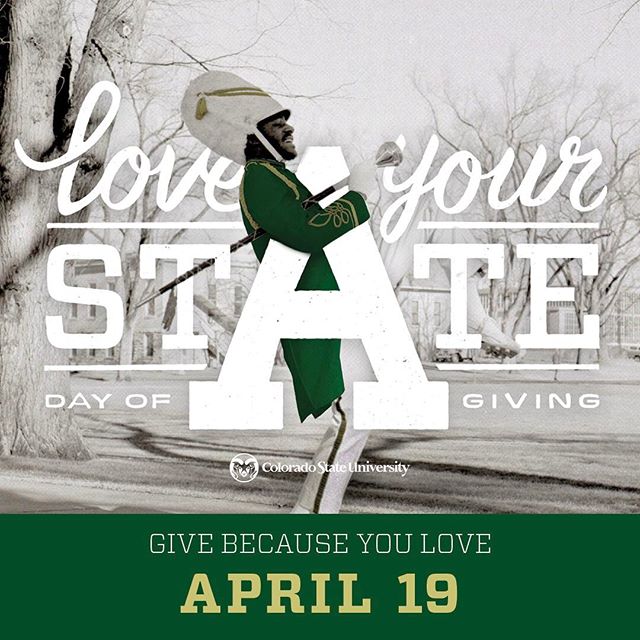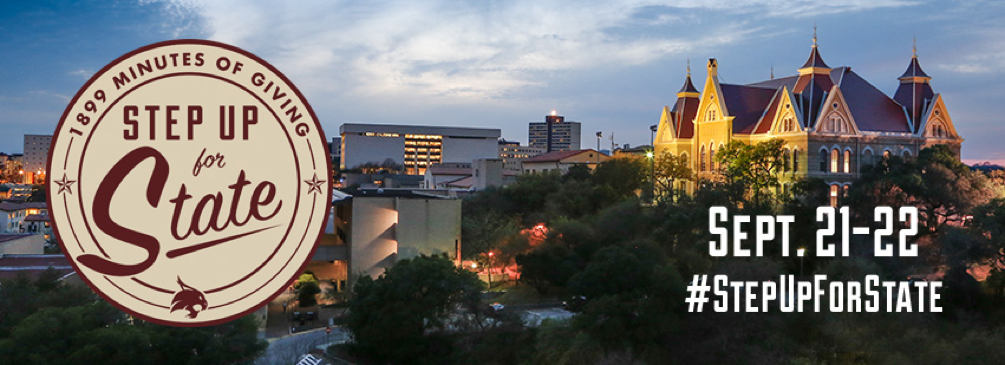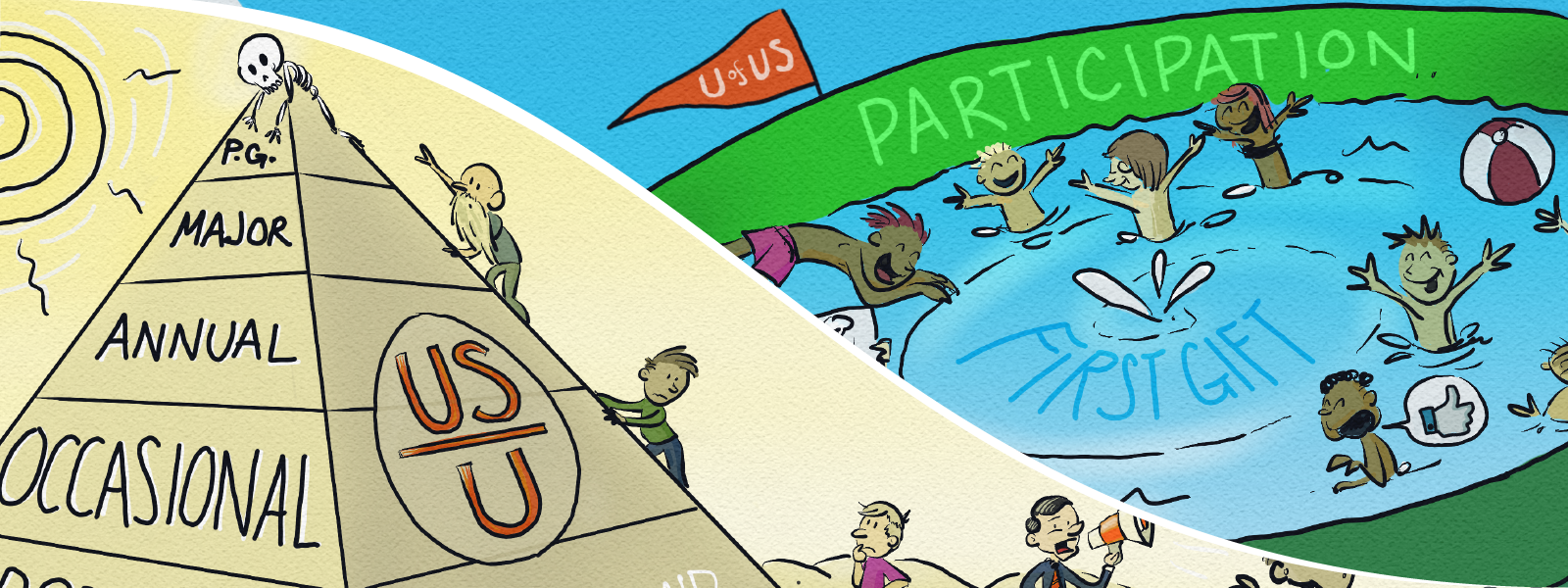min read
One of the best ways to grow momentum around a Giving Day initiative is through social sharing — but not just through your own channels.
In order to truly make an impact, you need to leverage the extended social networks of your faculty, staff, students, alumni, and donors.
So, what’s the best approach?
By creating a concise social media toolkit that gives these groups template posts, optimized images, and directions on how and when to use them you can make sharing a no-brainer. You can even evaluate and identify ambassadors that can pre-seed donations to your campaigns in addition to spreading the word.
Follow this walk-through to understand the elements you need to include in a social media toolkit, as well as how to disseminate it effectively as your event approaches.
1. Choose Your Hashtag

When it’s time to start promoting your giving day platform on social media, the first step is creating a distinctive hashtag to include in all posts. Why?
This is a great way for you to collect all the social media activity around your event in one place. It’s especially helpful when thanking donors who post about their gift.
Your audience will be able to find up-to-date information about your progress and their favorite campaigns by searching the hashtag.
Start by brainstorming 3-5 hashtags that fit your platform’s brand. Then go to Twitter, Facebook, and Instagram and use the search bar to see if anyone else is already using them.
2. Create Your Image Assets

As you develop your social media images, try to align them with those you’ve developed for your platform page. A good rule of thumb is to try to include the date of your event, the url of your page, and/or your hashtag.
Facebook, Twitter, and Instagram are the primary channels you should develop images for: they have the most robust sharing features while also integrating hashtags. Make sure you optimize your images for the different elements on each platform (profile pic, banner, etc).
Here are the ideal sizes with examples from our clients:
Instagram
Feed Photo (512×512)

Facebook
Profile Photo (170×170)

Cover Photo (828×315)

Twitter
Profile Photo (400×400)

Cover Photo (1500×1500)
3. Write Your Templated Posts

You should separate your templated posts by those optimized for Facebook and those optimized for Twitter. Twitter has a text limit of 140 characters so your content and call-to-action should be concise.
Regardless of which platform you’re drafting posts for, make sure you always include the link to your platform page and your hashtag. You should also encourage supporters to attach one of the images you’ve created to any post they share — posts with images are much more engaging.
Here are some examples you can use to craft your own templates:
With a Donor/Dollar/Matching Gift Challenge
Pre-Event
Facebook
Join me in supporting [Cause] on [Hashtag] Giving Day, [Date of Event]. The cause with the most [Donors/Dollars] at the end of the day will [List Prize or Accomplishment (ex. win a $25K bonus)]! Check out all of the causes and make your gift at [Platform Link]
Twitter
Join me in supporting [Cause] on [Hashtag] Giving Day, [Date of Event] and help them [List Prize or Accomplishment]! [Platform Link]
Day of Event
Facebook
I just made a gift to [Cause] for [Hashtag] Giving Day. The area with the most [Donors/Dollars] at the end of the day will [List Prize or Accomplishment]! Show your [School/College Name] love for your favorite cause at [Platform Link]
Twitter
I just made a gift to [Cause] for [Hashtag] Giving Day to help them [List Prize or Accomplishment]! Check it out at [Platform Link]
Without a Donor/Dollar/Matching Gift Challenge
Pre-Event
Facebook
Mark your calendars! [School/College Name] will host [Giving Day Name], an online giving initiative, on [Date of Event]. I plan to give back and I hope you’ll join me! For more info, visit [Platform Link] [Hashtag]
Twitter
Join me in supporting [Cause] on [Hashtag] Giving Day, [Date of Event] and help me support initiatives that make a difference! [Platform Link]
Day of Event
Facebook
Today [School/College Name] launched [Giving Day Name] to give back to their community. It will only be running for 1 day, so please show your support by donating and sharing! [LINK] [Hashtag]
Twitter
I just made a gift to [Cause] for [Hashtag] Giving Day to show my [School/College Name] love! Check it out at [Platform Link]
4. Put the Pieces Together

Start by drafting a short introduction to your social media toolkit with a description of what your event is, what the toolkit contains, and a clear ask for supporters to post your templated content and/or mention any causes they donate to.
Try to include both the images and posts you’ve created in one document so supporters don’t have to toggle between multiple downloads to access everything. You should break the toolkit up by social media channel rather than by date so that each channel has everything listed for quick reference.
Here’s an example of how to organize your toolkit:
Introduction
-
-
- Pre-Event Post
-
- Day of Event Post
-
- Profile Photo
- Cover Photo
-
-
-
- Pre-Event Post
-
- Day of Event Post
-
- Profile Photo
- Cover Photo
-
-
- Feed Photo
5. Promote Your Toolkit

Identify Your Ambassadors
Certain individuals will become your social media champions and help share your event before, during, and after through their own profiles. They can also be nurtured as early donors to your platform so you launch with momentum.
To maximize your efforts, you should begin to identify potential social media ambassadors 90 days before launch and send them any materials 30 days before launch. Consider volunteers from student orgs, deans within the colleges running giving day campaigns, stakeholders within advancement, major gift prospects, and alumni who are highly involved.
Whoever you identify, make sure they are willing to commit their time and that you give them a clear outline of what you’re asking.
Here’s an example outline of responsibilities you can send to ambassador prospects:
Today
-
- Take a look through our social media toolkit
-
- Follow our social media channels: [links to any giving, alumni, university, clubs, etc. pages]
- Add [Giving Day name] to your calendar for [date] with the link to our fundraising page [platform link]
1 Week before [Date]
-
- Change your Facebook and Twitter profile pictures and cover photos
-
- Share the [School/University’s] Facebook and Twitter pre-event post
-
- Announce [Campaign name(s)]!
- Tag friends in your posts
2-3 Days before [Date]
-
- Re-post about [Giving Day name] on your favorite social media channels
-
- Tag friends in your post
- Make your gift early at [LINK]
[Date] Day of Launch!
-
- Post/share on social media throughout the day using our Day of Launch posts
-
- Tag your friends and encourage them to donate and show support on social media
-
- On Facebook, post in [School/University name] Groups to reach your classmates and friends
-
- If you know someone who made a gift, send them a personal thank you or social media shout out
- If you haven’t already, please follow us and re-post: Links to social channel
Reach Out to Your Community
Pre-Event
-
- Send out your toolkit in coordination with a Save the Date announcement.
-
- Include a link in your announcement of your giving day in your alumni newsletter.
- Ask participating colleges to send out the toolkit to staff, student, and alumni advocates.
Day of Event
-
- Include a link on your giving page or a call-to-action on your donation thank you page.
-
- Post it on all of your social channels with a call-to-action to share.
- Respond to people who share about your cause with a thank you and a link to help them continue to engage.








